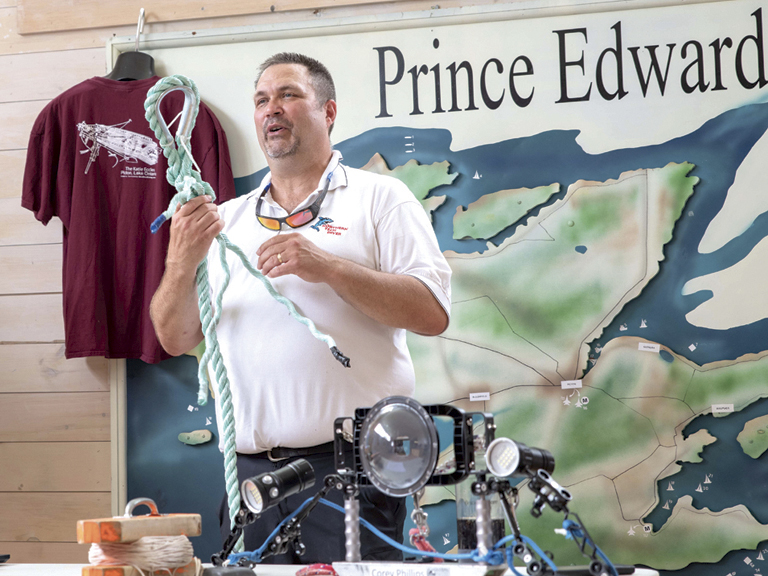County News
Saving Ontario shipwrecks

Preserving marine heritage for future generations
The Great Lakes are the graveyard of thousands of sailing vessels, and while some may be of little interest to historians, there is a veritable slice of marine heritage at the bottom of these lakes. The area in Lake Ontario around the County is no exception, and there are dozens of vessels from the age of sail or steam for which it is their final resting place. Some of these shipwrecks are well known to the diving community and the organization Save Ontario Shipwrecks is dedicated to studying and preserving this aspect of marine heritage. On Saturday afternoon Corey Phillips spoke at Mariners Museum about shipwrecks in this area and what is being done to document them and preserve them for future generations. He noted that prior to the age of railways and expressways, the ship traffic in Lake Ontario was akin to Highway 401and formed an essential part of the economy of the young province.
Mr. Phillips started diving in 2002 after receiving a birthday gift of dive lessons from his wife, Holly. Since that time he has completed over 900 dives and has spent a small fortune on diving equipment. Safety is his primary concern on dives, and he always dives with multiple spare tanks. His dives in Lake Ontario may take him to depths of over 200 feet, and he needs to make sure he has enough air to make the slow ascent to the surface, typically two minutes for every minute spent on the bottom.
Although most wrecks are reasonably well preserved in the cold depths of the lake, they will deteriorate over time. Add to that unanticipated damage from boat anchors or commercial fishing gear, or unscrupulous divers taking a “souvenir”, there is a need to document existing wrecks and establish protocols for diving activities. Mr. Phillips said that sometimes even bubbles from scuba gear can have a detrimental effect. One of his projects is to take underwater video of the wrecks, which are then used to create a 3-D model. This model is used as a template to make a detailed sketch of the area. This way changes can be documented over the years, and the sketches can be used to plan dive activities. A major part of the project is to place permanent mooring buoys at dive sites. This takes the form of a 2,000 kilogram concrete block (set in place by a Coast Guard vessel) to which a mooring line is attached. The floating buoy at the surface provides a well marked mooring point for the dive boats and will help to reduce disturbances at the bottom. There are currently buoys at eight locations near the County and two others are planned.
All shipwreck in Ontario waters are protected by law from being disturbed or salvaged, and there are three locations where diving is not permitted. These are at the site of the Edmund Fitzgerald, and at the site of the warships Hamilton and Scourge. The first is an official grave site, and the latter two are war memorial sites. Mr. Phillips has visited most if not all of the shipwreck locations in this area. These include the wreck of the Katie Eccles, the City of Sheboygan—whose anchor is at Mariners Museum—and the Oliver Mowat. The latter sank after being hit amidships near Main Duck Island, with the loss of the captain and two crew. The riven hull of the Oliver Mowat is still clearly visible. Some of the shipwrecks in Lake Ontario are functionally complete in that the components are all there, though in state of decay. Others had been stripped of anything salvageable before being towed out and scuttled. Mr. Phillips and the Save Ontario Shipwrecks group are hoping to create a community of divers and supporters to help preserve this important part of Ontario’s maritime heritage for future generations. For more information, please visit saveontarioshipwrecks.ca

Comments (0)